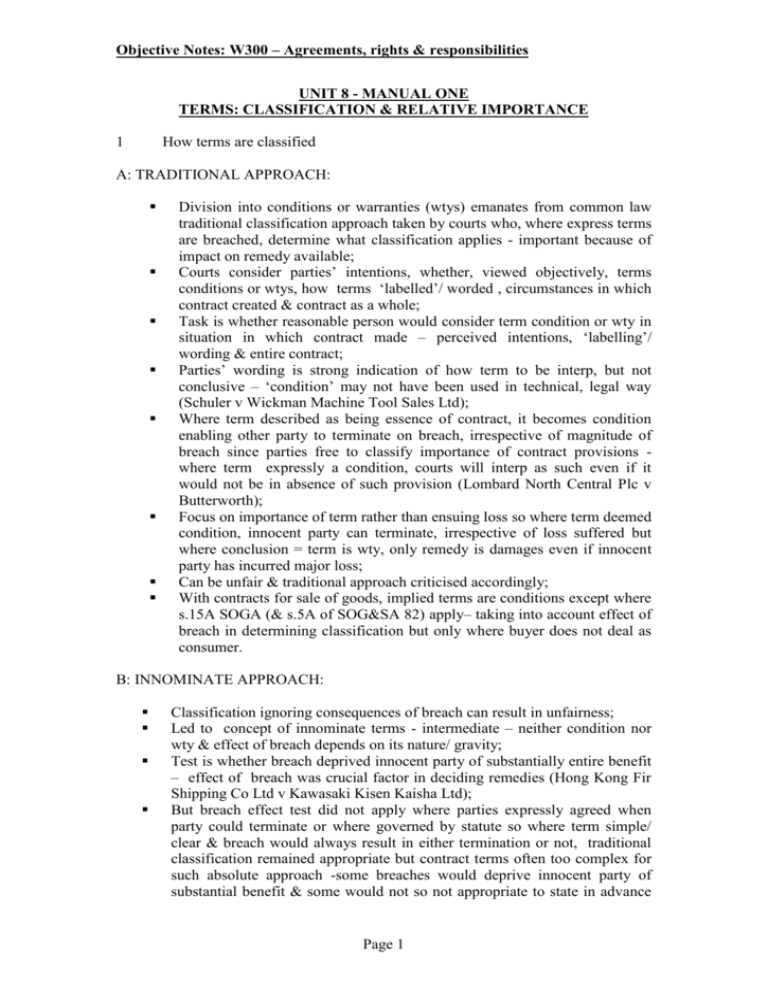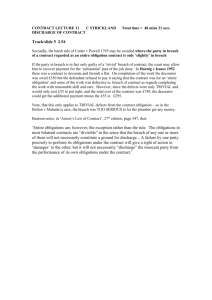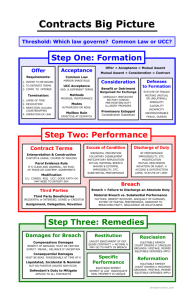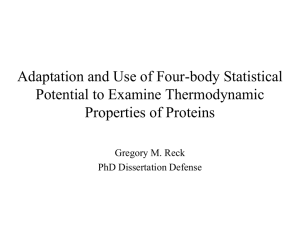Unit 8
advertisement

Objective Notes: W300 – Agreements, rights & responsibilities UNIT 8 - MANUAL ONE TERMS: CLASSIFICATION & RELATIVE IMPORTANCE 1 How terms are classified A: TRADITIONAL APPROACH: Division into conditions or warranties (wtys) emanates from common law traditional classification approach taken by courts who, where express terms are breached, determine what classification applies - important because of impact on remedy available; Courts consider parties’ intentions, whether, viewed objectively, terms conditions or wtys, how terms ‘labelled’/ worded , circumstances in which contract created & contract as a whole; Task is whether reasonable person would consider term condition or wty in situation in which contract made – perceived intentions, ‘labelling’/ wording & entire contract; Parties’ wording is strong indication of how term to be interp, but not conclusive – ‘condition’ may not have been used in technical, legal way (Schuler v Wickman Machine Tool Sales Ltd); Where term described as being essence of contract, it becomes condition enabling other party to terminate on breach, irrespective of magnitude of breach since parties free to classify importance of contract provisions where term expressly a condition, courts will interp as such even if it would not be in absence of such provision (Lombard North Central Plc v Butterworth); Focus on importance of term rather than ensuing loss so where term deemed condition, innocent party can terminate, irrespective of loss suffered but where conclusion = term is wty, only remedy is damages even if innocent party has incurred major loss; Can be unfair & traditional approach criticised accordingly; With contracts for sale of goods, implied terms are conditions except where s.15A SOGA (& s.5A of SOG&SA 82) apply– taking into account effect of breach in determining classification but only where buyer does not deal as consumer. B: INNOMINATE APPROACH: Classification ignoring consequences of breach can result in unfairness; Led to concept of innominate terms - intermediate – neither condition nor wty & effect of breach depends on its nature/ gravity; Test is whether breach deprived innocent party of substantially entire benefit – effect of breach was crucial factor in deciding remedies (Hong Kong Fir Shipping Co Ltd v Kawasaki Kisen Kaisha Ltd); But breach effect test did not apply where parties expressly agreed when party could terminate or where governed by statute so where term simple/ clear & breach would always result in either termination or not, traditional classification remained appropriate but contract terms often too complex for such absolute approach -some breaches would deprive innocent party of substantial benefit & some would not so not appropriate to state in advance Page 1 Objective Notes: W300 – Agreements, rights & responsibilities what effect of a breach would be – decision should be made after breach depending on its effect. 2 Importance of classification vis-à-vis remedies for breach In trad approach, condition = major term so innocent party can terminate or affirm irrespective of gravity (plus right to damages re losses suffered) & this enables termination for non-legal reasons – e.g. change of mind or discovering better deal elsewhere (Arcos Ltd v Ronaasen & Son); But where term = wty it’s minor term - & remedy is limited to damages, irrespective of loss suffered. With innominate terms, effect of breach determines remedy & relates it to breach’s gravity; Trad approach promotes certainty so parties know from outset consequences of breach but unfairness can result– where term = condition innocent party may terminate even if loss is minor but where term = wty cannot terminate even if has suffered major loss. Conversely, innominate terms introduce flexibility & fairness but certainty lost - parties do not know from the outset consequences of breach as it’s only determined if & when breach occurs & in commercial situations there should be definite rules for commonly used terms (The Mihalis Angelos). Page 2








